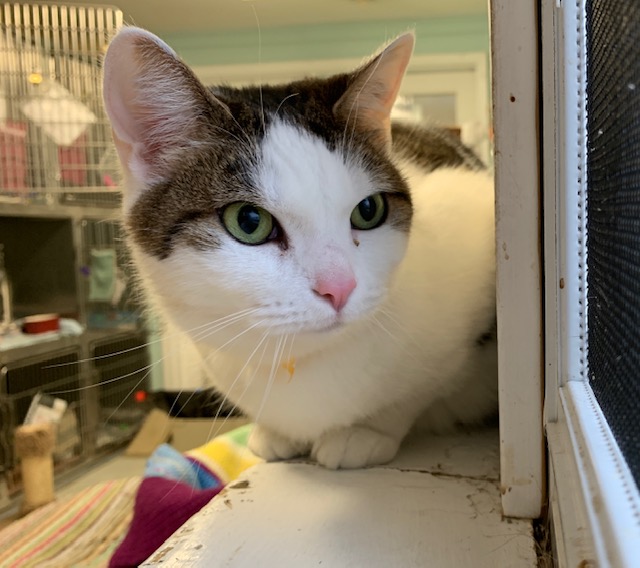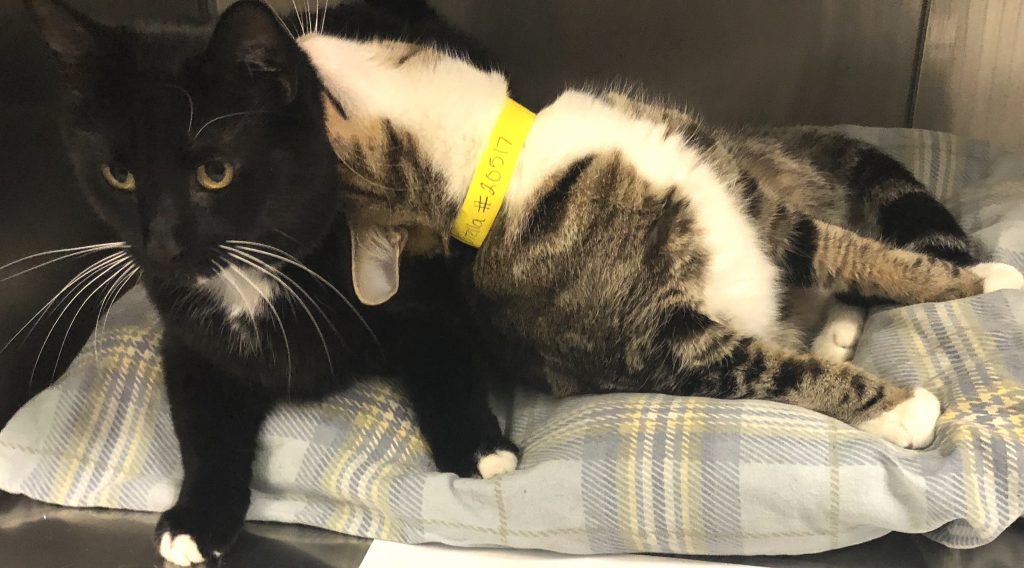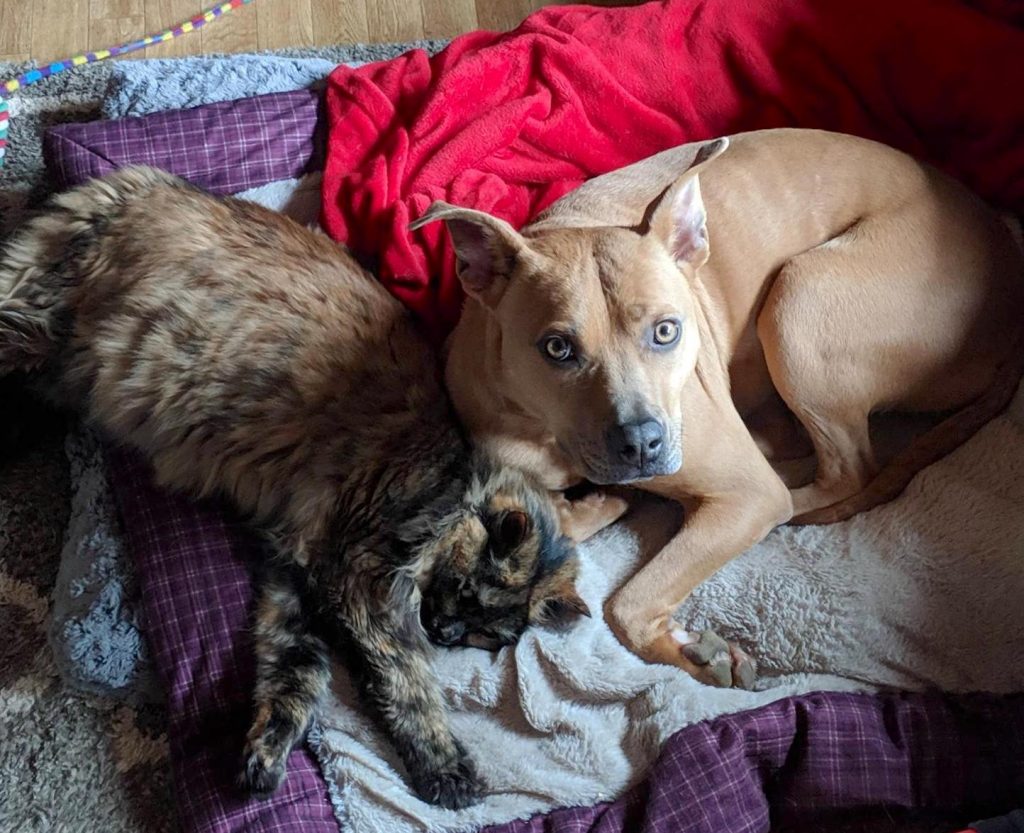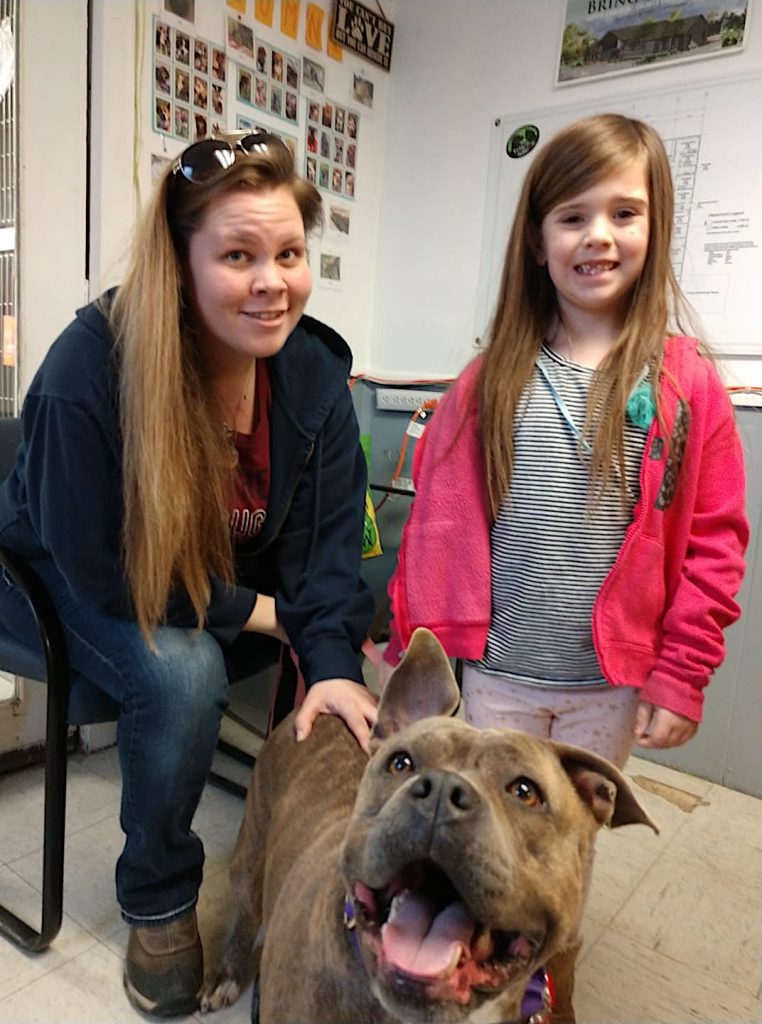Welcoming a new pet to your home is an exciting experience, but it can also be stressful and chaotic. It takes time for a new pet to adapt to their forever home, and that adjustment period is different for each individual animal. Preparation and patience are key for setting your new pet up for success. If you rush the process or don’t plan for a proper acclimation, you’ll be creating undue stress, tension, and confusion for both your new pet and your family. Here are some tips for properly introducing a new pet to your home.
Provide a Safe Space

Resist the urge to give your new pet free reign over your home. Animals can become overwhelmed in large, new spaces, especially those who have been confined to a kennel for weeks or months at a shelter. Start by giving your new pet a designated space– ideally a small, secluded room for a cat and a quiet corner or crate for a dog. You should only allow them to roam freely in their designated safe space for the first few days. The space should have bedding, food and water bowls, toys, and a litter box (if necessary), and should be free of any hazardous objects (poisonous plants, loose wires, etc). Allow your pet to become comfortable in this small space before introducing them to the rest of your home.
After a few days to a week (some animals, especially cats, may require more time), you can begin introducing your new pet to the rest of the home if they seem comfortable. Make sure any “off limits” rooms are not accessible during initial introductions, so your pet can learn where it is allowed to go.

Introducing Dogs to the House
For dogs, expose them to new spaces while on leash. Take your dog throughout your home, letting them sniff everything. If they attempt to climb on something or play with an object they’re not supposed to, redirect with a calm “leave it” or “no” command, and offer toys or treats in a more appropriate area of the house (i.e. where you’d like them to lay or play with toys). Redirection paired with positive reinforcement will help your pet learn the rules of their new home.
Some dogs may need many on-leash tours of your home before they get acclimated and learn the rules of the house. Once you feel your dog has become comfortable with your home while leashed, you can let them off leash under your supervision. Do not leave them unsupervised with free reign of your home until you’re positive your dog is comfortable in their new environment.
Introducing Cats to the House

When introducing a cat to your home, the process is similar. Allow your cat to acclimate to their designated safe space for about a week. This is not only to allow them to adjust to a new space, but also get acquainted with the location of their litter box. Cats are intense creatures of habit, so don’t be surprised if they need more time or even hide for a couple of days upon coming home. In fact, you should provide a couple of hiding places in their safe space to help make your cat feel comfortable. A cardboard box with a towel over it will do the trick! Once your cat seems more at ease, you can start to give it access to the rest of your home.
Start the introduction slowly, by leaving the door to their room open, and sitting outside of it. Urge your cat to come to you with treats or toys, and reward them when they do. Remain seated while your cat begins to explore your home. After 15 minutes or so, if they seem comfortable exploring, go about your business, but remain close enough to supervise. Limit their roaming to about an hour at first, gradually lengthening the time until your cat has free run of the house whenever you are home.
Make sure rooms that are off limits to your cat are not accessible during initial explorations, and establish house rules early. If you don’t want your cat jumping on counters or other furniture, you can put double-sided tape or aluminum foil on the surfaces to deter the unwanted behavior. Don’t allow them to roam unsupervised until you’re confident your cat has acclimated to the new spaces and knows the house rules.
Once your cat has adjusted to the new surroundings, you can move their food, water, and litterbox to their permanent locations (if they are not remaining in the original safe space).
If your new pet ever seems overwhelmed or frightened with their newfound freedom, or isn’t following the house rules, then go back a couple of steps and repeat the process. Every animal is different. Some may adjust quickly to their new homes, while others may take weeks or even months to get acclimated. It’s important not to rush the process.
Facilitating Positive Interactions with Current Pets
When introducing your new pet to your current pet, it is essential to be patient and keep the interactions calm and positive. If two pets don’t like each other at first, it doesn’t necessarily mean their relationship is doomed. Proper introductions between pets are essential to a peaceful, safe coexistence. It will take time and effort for your pets to get to know each other and build a relationship.
Dog Meets Dog

- Have the dogs meet on leash in a neutral location, like a park or down the street from your home, so there are no territorial motivations. Walk the dogs together (you’ll need two people for this), keeping them about ten feet apart. They should not be able to stare at or greet one another, they are just getting acclimated to being in the same general area. As they get comfortable, you can slowly let them walk closer together, even allowing them to greet one another (aka sniff butts) or sniff objects together. Ensure that these closer interactions are controlled, and watch closely for signs of fear, stress, or aggression. If either dog becomes uncomfortable with closer contact, back off to a further distance.
- Once they are comfortable walking together on leash, have them interact in a neutral area with leashes dragging. This area should not be small or have spaces where the dogs could become easily confined or feel trapped. Leaving their leashes on, but not holding them, gives the dogs more freedom while still giving you the option to grab the leash if something goes wrong. Allow the dogs to sniff and greet each other, and then separate them. If they begin playing and seem comfortable, let them play for a few minutes, then separate them. Play sessions can get longer as the dogs get to know each other better.
- Once you’ve mastered neutral territory interactions, you can introduce your dogs at your home. Do this with both dogs on leash. Have them interact in the yard first, then in the house. Before allowing them to meet inside the house, let the new dog go inside and sniff around on leash to get acclimated while the current dog stays outside. When allowing the dogs to interact in your home, keep the meetings short and positive. If either dog shows signs of stress, separate them and try again later.

- Even when the dogs are coexisting inside the house, keep them separated when you’re not home until you’re positive they’re getting along. For everyone’s safety, they should be kept in separate rooms or crates when unsupervised.
- Actively prevent conflict by rewarding positive behaviors and managing their environment. For example, introduce toys slowly and make sure each dog has their own food and water bowl in a separate area, to avoid potential conflicts. Feed them separately until they become more adjusted to one another’s presence. Some dogs may eventually be able to eat next to one another or share toys, but others may never comfortably reach that point. Carefully controlled living environments can help prevent conflict.
- If either of the dogs seem uncomfortable during the introduction, always go back to the previous step. Facilitating positive interactions will take time, and rushing the process can permanently damage your dogs’ relationship. If you have multiple dogs, complete the introduction phases with each dog separately.
Cat Meets Cat

- The first step when introducing a new cat to your home when you already have a cat starts before you even bring the newcomer home. When selecting your new cat, it is important to consider its temperament and age in comparison to your current cat. You’ll want to consider adopting a cat that has a demeanor similar to your current cat to ensure success. This goes for adult cats, since two adult cats may have a harder time adjusting to one another than an adult cat and a kitten will. Cats can be much more accepting of kittens than of their peers.
- Once you select your new cat, be sure it has a safe space in a room of its own (as mentioned earlier) to get adjusted to the new home. Do not allow your current cat into this safe space.
- Begin introductions by feeding your cats on the opposite sides on the same door, so they can get used to hearing and smelling each other during a positive time. Move the bowls closer to the door as the cats get acquainted with one another’s presence. Eventually, you can crack the door during feeding time so they can see each other while eating, but only for a second and only open it a tiny bit!
- Once your new cat has adjusted to its safe space, allow it to explore its surroundings using the processes discussed earlier. Make sure that your current cat is confined to a separate room during these initial explorations. This helps your new cat discover your current cat’s scent. You can also help your cats get used to each other’s scent by exchanging their bedding for a night or two.

- When you finally introduce your cats face-to-face, monitor their interactions closely and keep them short. Almost always, two cats will display some aggressive or fearful behaviors initially, but this is normal. Separate the cats if such behaviors escalate or a fight breaks out.
- If your cats get into a fight, use a loud noise or throw a towel over them to distract them and then separate the cats for a while.
- Continually monitor your cats’ interactions. If they start to stare, freeze, or exhibit signs of aggression towards each other, use toys or treats to distract them. Offering the cats rewards around each other will facilitate positivity that they associate with being together.
- Remember that your cats do not need to be BFFs to have a successful coexistence. The goal is to have a safe, peaceful living environment for all parties.
Dog Meets Cat, Cat Meets Dog
- To get started, make sure the cat has a safe space in a room separate from the dog, and vice versa. Keep your dog and cat separate from each other for at least a few days, so they can get used to each other’s smells, sounds, and presence without seeing each other.
- Like with the introduction of two cats, feed your pets on the opposite sides of a closed door, so they can get used to eating near one another. Gradually move the bowls closer to the door, until both pets can eat comfortably next to one another. If you can do so safely, open the door a crack for a second or two, so they can see one another while they eat.

- Once they are comfortable with closed-door interactions, you can allow your dog and cat to meet face-to-face. Keep your dog on a leash, but let your cat roam freely. Make sure that your pets meet in “neutral” territory, not in either of their safe spaces. Keep the meetings short, and if either pet shows signs of stress or aggression, distract and separate them. Be sure to reward positive behavior for both pets to build that association of positivity when the two pets are near one another.
- Continue having these short meetings every day, and try to end each interaction on a positive note, before either pet exhibits any negative behaviors.
- It may take quite some time, but once your cat and dog seem to be getting along, you can let them roam freely together under your supervision. Keep a dragging leash on your dog initially, so you can grab it or step on it if an issue occurs. Again, if either animal seems stressed or uncomfortable, repeat previous steps to continue building their relationship.
- Continue to keep your cat and dog separate when you’re not home until you’re positive they’re getting along. Even as they become comfortable, ensure that your cat always has a dog-proof safe space.
Children and Pets

To ensure the safety of both your children and your new pet, it is essential to first teach your children how to properly approach and treat animals. To facilitate positive interactions with new pets, children must be taught to respect the animal. New pets are going to be initially apprehensive of unfamiliar people and scenarios. When interacting with new pets, children should remain calm, relatively quiet, and gentle.
Do not allow children to chase, pick up, or have close face-to-face contact with pets. Loud noises, high-pitched voices or sounds, and sudden movements can frighten or startle pets. Make sure that children know to move slowly and speak quietly around pets, especially new ones. Teach children not to look directly into an animal’s eyes, as that can be taken as a sign of intimidation, especially for dogs.
Lastly, ensure that children know to respect a pet’s space and privacy. A child should never disturb or touch an animal that is eating, sleeping, hiding, or chewing a toy. Children and pets, especially new pets, should never be allowed to interact unsupervised.
Welcoming a pet into your home is a wonderful thing, and can be a very rewarding experience. However, it takes time for a new pet to get adjusted to unfamiliar surroundings and family members. Patience, positivity, and persistence are all vital qualities for a safe and healthy introduction. If your new pet (or current pets) show any signs of fear, aggression, or discomfort, always remember to slow the process down. Every animal is different—some will adapt quickly while others may take weeks or months to settle in. If you have further questions or concerns during the adjustment period with your new pet, don’t hesitate to reach out to your vet, local animal trainer, or the rescue you got them from for advice.
